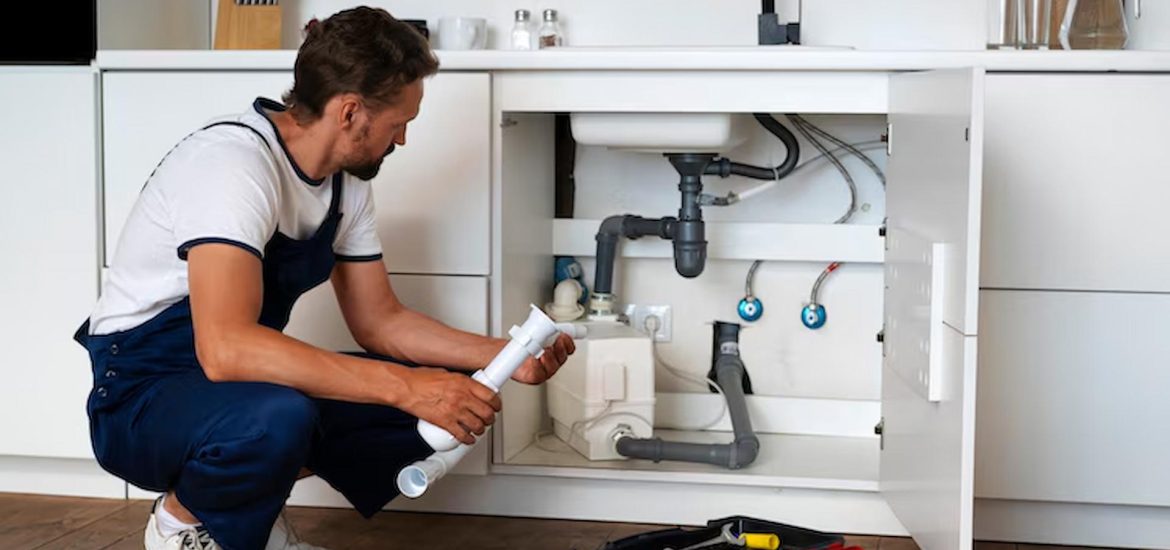Water leaks can be a homeowner’s worst nightmare, leading to significant damage and expensive repairs if not addressed promptly. Early detection and repair of water leaks can save you money, time, and stress, whether the leak is small or large. In this blog post, we’ll explore practical methods for detecting water leaks in your home and provide practical steps for water leak repair.
Common Signs of Water Leaks
Water leaks can manifest in various ways, some more obvious than others. Knowing the common signs can help you catch leaks early before they escalate into more severe problems.
- Visible Water Stains: One of the most apparent signs of a water leak that requires water leak repair is water stains on walls, ceilings, or floors. These stains are usually brown or yellow and indicate that water is seeping into these areas from a leak.
- Mold and Mildew: Mold and mildew flourish in high humidity and moisture conditions. If you notice a persistent musty smell or visible mould growth in your home, it’s a clear sign of excess moisture, likely from a water leak.
- Increased Water Bills: A sudden spike in your water bill without any corresponding increase in usage can indicate a hidden water leak. Monitoring your water bill can provide an early warning.
- Sound of Running Water: You might have a hidden leak if you hear running water when all faucets are off. Plumbing system leaks often occur within walls or under floors.
- Damp or Wet Spots: Damp spots on floors, carpets, or walls indicate a water leak. These spots might feel warm if the leak is from a hot water pipe.
Methods to Detect Water Leaks
Detecting water leaks requires a combination of visual inspections and specific tools designed to identify hidden leaks. Here are some effective methods:
- Check Your Water Meter: One of the simplest ways to check for leaks is to use your water meter. Turn off all water fixtures and appliances in our home, and then check the meter. If it is still running, you take a leak.
- Use Leak Detection Devices: Various leak detection tools can help you identify hidden leaks. These devices range from simple dye tablets that detect toilet leaks to advanced electronic leak detectors that identify leaks within walls.
- Inspect Appliances and Fixtures: Regularly inspect appliances and fixtures for any signs of leaks. It includes checking under sinks, around the bases of toilets, and behind appliances like dishwashers and washing machines.
- Thermal Imaging Cameras: For a more advanced approach, thermal imaging cameras can detect temperature differences in your walls and floors, indicating the presence of moisture and potential leaks.
- Professional Inspection: If you suspect a leak but cannot locate it, hiring an experienced plumber or leak detection specialist can save you time and ensure it is accurately identified and repaired.
Water Leak Repair: DIY Solutions
Once you’ve identified a water leak, the next step is to address it. While some leaks require professional intervention, many minor leaks can be fixed with simple DIY methods.
- Fixing Leaky Faucets: Leaky faucets are often caused by standard household washers or seals. Replacing these components can stop the leak. Make sure to turn off the water supply before disassembling the faucet.
- Repairing Toilet Leaks: Toilet leaks can waste a significant amount of water. The most common cause is a faulty flapper valve, which can be replaced straightforwardly. Additionally, check the fill valve and overflow tube for any issues.
- Sealing Pipe Leaks: Small leaks in pipes can often be temporarily fixed using pipe repair clamps or epoxy putty. For a more permanent solution, you may need to replace the section of the pipe.
- Addressing Leaks in Appliances Check the hoses and connections: To prevent leaks in appliances like dishwashers or washing machines, tighten loose connections and replace damaged hoses.
- Fixing Roof Leaks: Check for damaged or missing shingles if you identify a leak in your roof. Replacing these can often stop the leak. Ensure that flashing around chimneys and vents is intact and sealed correctly.
Preventing Future Water Leaks
Preventing water leaks and addressing water leak repair is crucial to maintaining the integrity of your home. Regular maintenance and vigilance can help you avoid the hassle and cost of future leaks.
- Regular Inspections: Schedule regular inspections of your plumbing system, roof, and appliances. Early detection of potential issues can mitigate the development of leaks.
- Install Water Leak Detectors: Installing water leak detectors in vulnerable areas such as under sinks, near water heaters, and behind appliances can provide early warnings of leaks.
- Maintain Your Plumbing System: Regularly check for and repair any minor leaks in your plumbing system. Replace old pipes and fixtures as needed to prevent leaks.
- Insulate Pipes: In colder climates, insulating your pipes can prevent them from freezing and bursting, a common cause of water leaks.
- Proper Landscaping: Ensure your landscaping is designed to divert water from your home’s foundation. Correct grading and drainage systems can prevent water from seeping into your basement or crawl space.
Conclusion
If not addressed promptly, water leaks in your home can lead to extensive damage and costly repairs. By understanding the signs of water leaks, using effective detection methods, and implementing both DIY and professional repair solutions, you can protect your home from the adverse effects of water damage. Regular maintenance and preventative measures are crucial to ensuring your home remains leak-free. Stay vigilant, and don’t hesitate to seek professional help to keep your home safe and dry.
